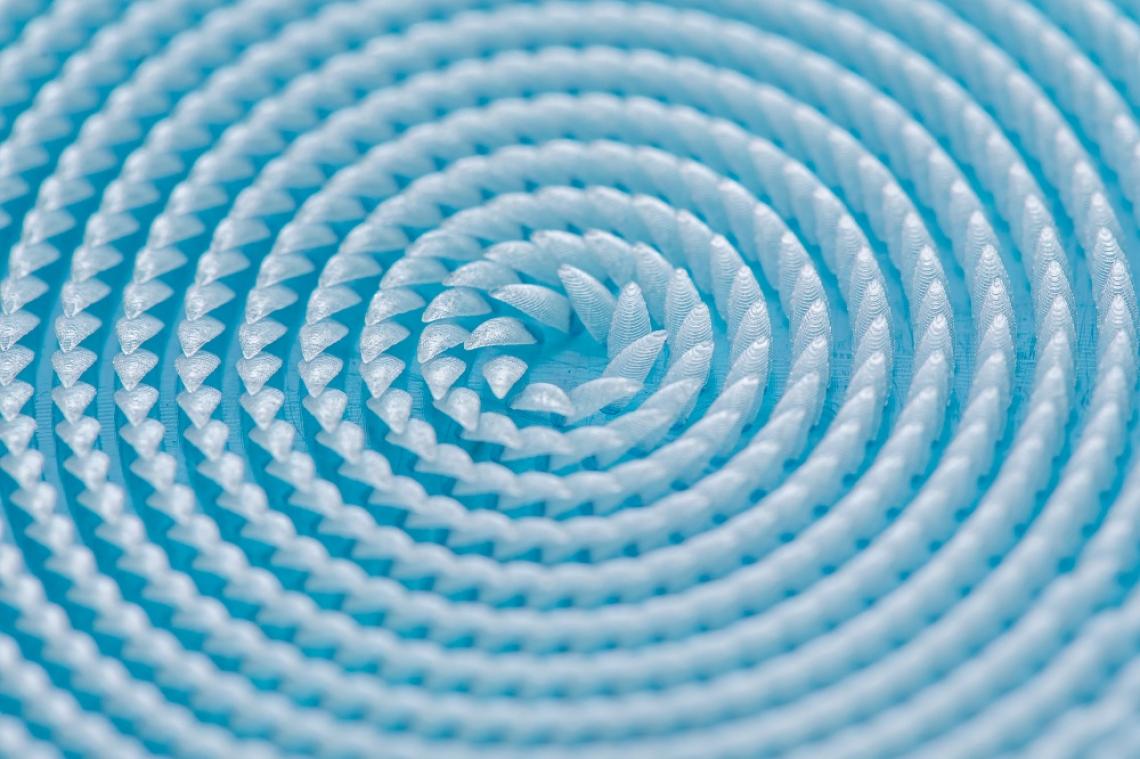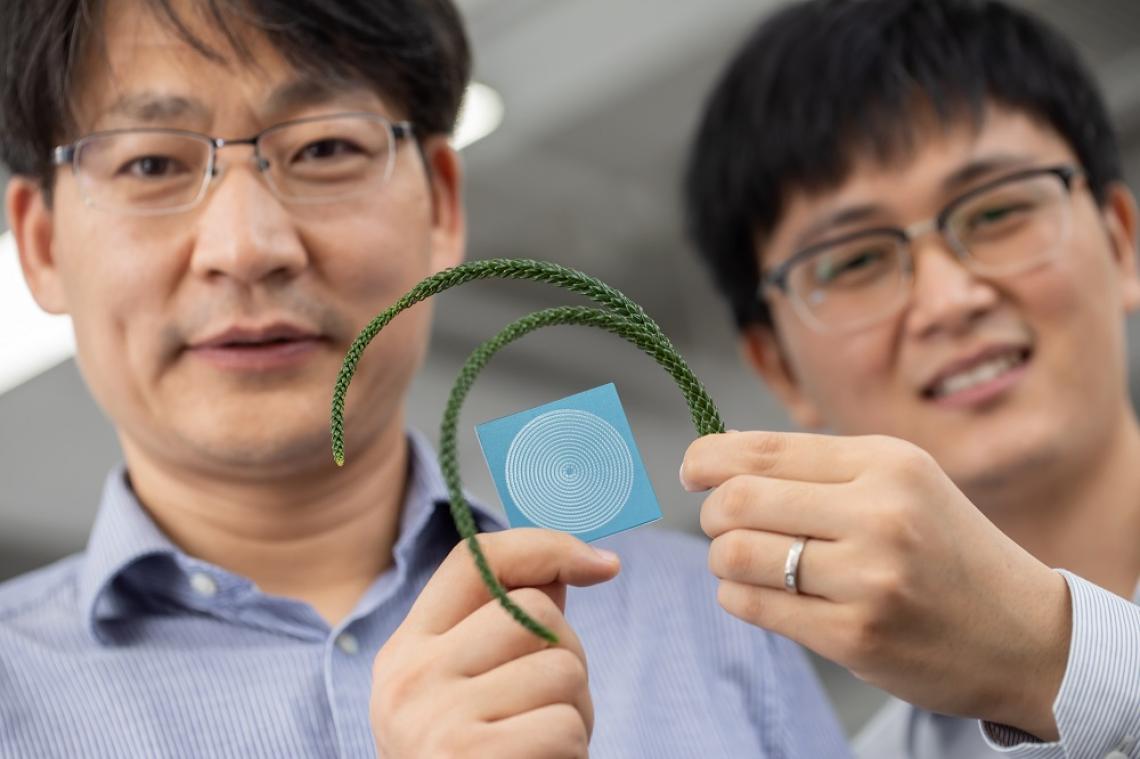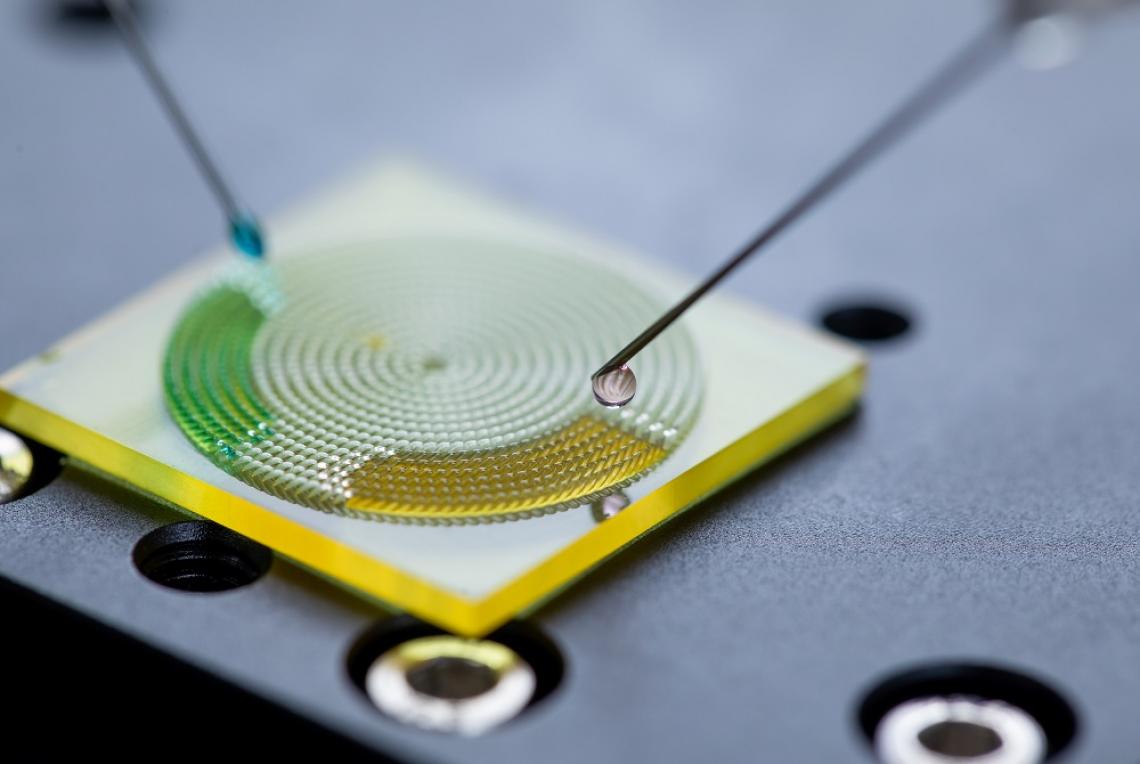Led by Professor Wang Zuankai, Chair Professor in the Department of Mechanical Engineering (MNE) of CityU, the research team found that the unexpected liquid transport behaviour of the Araucaria leaf provides an exciting prototype for liquid directional steering, pushing the frontiers of liquid transport. Their findings were published in the prestigious scientific journal Science under the title “Three-dimensional capillary ratchet-induced liquid directional steering”.
Araucaria is a species of tree popular in garden design. Its leaf consists of periodically arranged ratchets tilting towards the leaf tip. Each ratchet has a tip, with both transverse and longitudinal curvature on its upper surface and a relatively flat, smooth bottom surface. When one of the research team members, Dr Feng Shile, visited a theme park in Hong Kong with Araucaria trees, the special surface structure of the leaf caught his attention.
Special leaf structure enables liquid to spread in different directions
“The conventional understanding is that a liquid deposited on a surface tends to move in directions that reduce surface energy. Its transport direction is determined mainly by the surface structure and has nothing to do with the liquid’s properties, such as surface tension,” said Professor Wang. But the research team found that liquids with different surface tensions exhibit opposite directions of spreading on the Araucaria leaf, in stark contrast to conventional understanding.
By mimicking its natural structure, the team designed an Araucaria leaf-inspired surface (ALIS), with 3D ratchets of millimetre size that enable liquids to be wicked (i.e. moved by capillary action) both in and out of the surface plane. They replicated the leaf’s physical properties with 3D printing of polymers. They found that the structures and size of the ratchets, especially the re-entrant structure at the tip of the ratchets, the tip-to-tip spacing of the ratchets, and the tilting angle of the ratchets, are crucial to liquid directional steering.
By mimicking its natural structure, the team designed the Araucaria leaf-inspired surface with 3D ratchets, which enable different water-ethanol mixtures of varying surface tension to spread in three directions: forwards, backwards and bidirectionally.
Credit: City University of Hong Kong
For liquids with high surface tension, like water, the research team discovered that one frontier of liquid is “pinned” at the tip of the 3D ratchet. Since the ratchet’s tip-to-tip spacing is comparable to the capillary length (millimetre) of the liquid, the liquid can go backward against the ratchet-tilting direction. In contrast, for liquids with low surface tension, like ethanol, the surface tension acts as a driving force and enables the liquid to move forward along the ratchet-tilting direction.
First observation of liquid “selecting” directional flow
“For the first time, we demonstrated directional transport of different liquids on the same surface, successfully addressing a problem in the field of surface and interface science that has existed since 1804,” said Professor Wang. “The rational design of the novel capillary ratches enables the liquid to ‘decide’ its spreading direction based on the interplay between its surface tension and surface structure. It was like a miracle observing the different directional flows of various liquids. This was the first recorded observation in the scientific world.”
Even more interesting, their experiments showed that a mixture of water and ethanol can flow in different directions on the ALIS, depending on the concentration of ethanol. A mixture with less than 10% ethanol propagated backwards against the ratchet-tilting direction, while a mixture with more than 40% ethanol propagated towards the ratchet-tilting direction. Mixtures of 10% to 40% ethanol moved bidirectionally at the same time.
“By adjusting the proportion of water and ethanol in the mixture, we can change the mixture’s surface tension, allowing us to manipulate the liquid flow direction,” said Dr Zhu Pingan, Assistant Professor in the MNE of CityU, another co-author of the paper.
Controlling spreading direction by adjusting surface tension
The team also found out that the 3D capillary ratchets can either promote or inhibit liquid transport depending on the tilting direction of the ratchets. When the ALIS with ratchets tilting upwards was inserted into a dish with ethanol, the capillary rise of ethanol was higher and faster than that of a surface with symmetric ratchets (ratchets perpendicular to the surface). When inserting the ALIS with ratchets tilting downwards, the capillary rise was lower.
Their findings provide an effective strategy for the intelligent guidance of liquid transport to the target destination, opening a new avenue for structure-induced liquid transport and emerging applications, such as microfluidics design, heat transfer enhancement for computer and electronics cooling, and smart liquid sorting.
“Our novel liquid directional steering has many advantages, such as well-controlled, rapid, long-distance transport with self-propulsion. And the ALIS can be easily fabricated without complicated micro/nanostructures,” concluded Professor Wang.
Members of the research team at City University of Hong Kong: Professor Wang Zuankai (left) and Dr Zhu Pingan (right).
Credit: City University of Hong Kong
Professor Wang is the corresponding author of the paper. Dr Zhu and Dr Feng, Associate Professor at Dalian University of Technology (DUT), who was also a former postdoc under Professor Wang’s supervision, are the co-first authors. The other co-authors are Dr Yao Xi, Associate Professor in CityU’s Department of Biomedical Sciences, Dr Zheng Huanxi and Dr Li Jiaqian (now a postdoc in HKU), in the MNE, Zhan Haiyang, Chen Chen, and Professor Liu Yahua from DUT, and Professor Wang Liqiu from The University of Hong Kong.
Professor Wang Zuankai from City University of Hong Kong holds a sample of the 3D printed Araucaria leaf-inspired surface.
Credit: City University of Hong Kong
The research received funding support from the Research Grants Council and the Innovation and Technology Fund in Hong Kong, the Shenzhen Science and Technology Innovation Council, the Tencent Foundation, the National Natural Science Foundation of China, Fundamental Research Funds for the Central Universities, and the Star Ocean Outstanding Talents Program.
DOI number: 10.1126/science.abg7552
A CityU research team designed an Araucaria leaf-inspired surface with 3D ratchets that enable different water-ethanol mixtures to spreading in three directions: forward, backward and both directions.
The picture on the left shows an Araucaria leaf, which consists of periodically arranged ratchets tilting toward the leaf tip. The picture on the right shows the structural characteristics of the ratchet arrays. The height (h), tip-to-tip distance (p), length (l), and tilt angle (a) of ratchets are ~2 mm, ~3 mm, ~2.6 mm, and ~40°, respectively.
Credit: City University of Hong Kong







